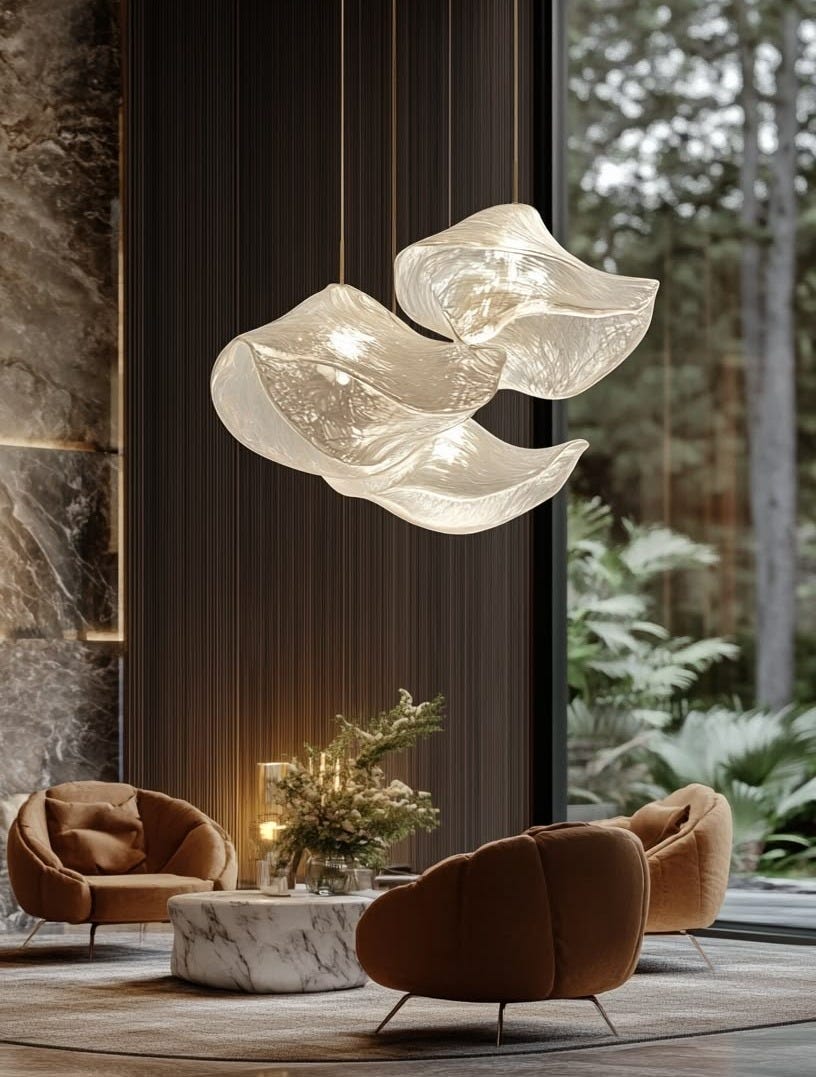Focal points are more than just eye-catching elements in a space. They act as visual anchors, guiding movement, setting the mood, and creating structure. When done right, they turn a space from ordinary to extraordinary, shaping how people experience and interact with it.
Our brains naturally seek out patterns and centers of interest, it’s how we process the world around us. This aligns with Gestalt principles, where we subconsciously differentiate between the foreground (figure) and background (ground). A well-executed focal point directs attention, evokes emotion, and emphasizes function. Without one, a space feels chaotic or disjointed. But too many? Visual noise that confuses rather than captivates.
The Core Gestalt Principles Behind Focal Points
1. Figure-Ground Relationship
Definition: How we distinguish an object (figure) from its surrounding area (ground).
Application in Design: A bold art piece or statement furniture stands out when contrasted against a simple background.
2. Proximity
Definition: Elements close together are perceived as a group.
Application in Design: Grouping related items (like furniture sets or decor) creates a sense of unity and guides movement.
3. Similarity
Definition: Objects with similar characteristics (shape, color, size) feel connected.
Application in Design: Repeating materials, colors, or forms reinforces a theme while a standout piece naturally becomes the focal point.
4. Continuity (Good Continuation)
Definition: The eye follows paths, lines, or curves, preferring smooth transitions.
Application in Design: Curved staircases, flowing furniture arrangements, and seamless moldings guide visual and physical movement.
5. Closure
Definition: The brain fills in missing information to create a complete image.
Application in Design: Partial shapes and suggestive outlines in art or architecture add intrigue and depth.
6. Symmetry and Order
Definition: Symmetrical arrangements feel balanced and harmonious.
Application in Design: While symmetry creates stability, deliberate asymmetry can create visual tension, emphasizing focal points.
Key Strategies for Effective Focal Points
Using contrasting colors, textures, or scales can make a focal element stand out. For example, a modern, sleek piece of furniture might serve as a focal point in an otherwise traditionally styled room.
When an element is isolated from other competing visuals, it gains prominence. Minimal surrounding clutter and deliberate spacing can ensure that the focal point retains its intended impact.
The success of a focal point depends on its scale relative to the rest of the space. Oversized elements command attention, while smaller details can be accentuated through contrast or unique placement.
In Residential interiors as designers we prioritize comfort, personality, and cohesion.
The focal point should Establish harmony within the space, Reflect personal style and function and Enhance the room’s proportions.
1. Architectural & Structural Elements
Fireplaces & Chimneys: The timeless heart of a living space, updated with contemporary materials like concrete, metal cladding, or reclaimed wood.
Windows & Natural Light: Large windows or skylights create focal points by framing outdoor views and shifting a space’s character throughout the day.
Accent Walls & Details: Bold colors, textures, or materials (stone, wood panels, intricate moldings) naturally draw the eye.
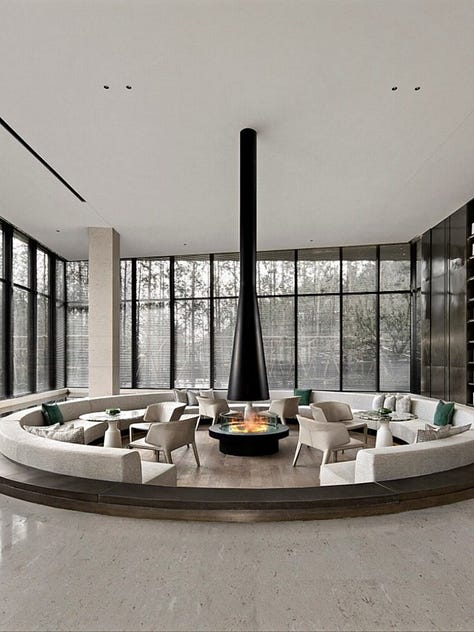


Images from pinterest
2. Curated Furnishings & Art
Statement Furniture: In residential design, furniture isn’t merely functional; it is an expression of personality. A designer may select a piece with an unconventional form or vibrant color to serve as the room’s centerpiece, ensuring it complements the overall aesthetic.
Artwork & Personal Collections: Gallery walls or oversized art installations allow residents to tell their personal story. When choosing art as a focal point, consider factors such as thematic coherence, scale, and lighting, ensuring the art resonates with the room’s ambiance.
Textiles & Soft Furnishings: Rugs, curtains, and cushions can ground a space and subtly direct attention. For example, a boldly patterned rug can delineate seating areas and serve as a counterbalance to more subdued elements.
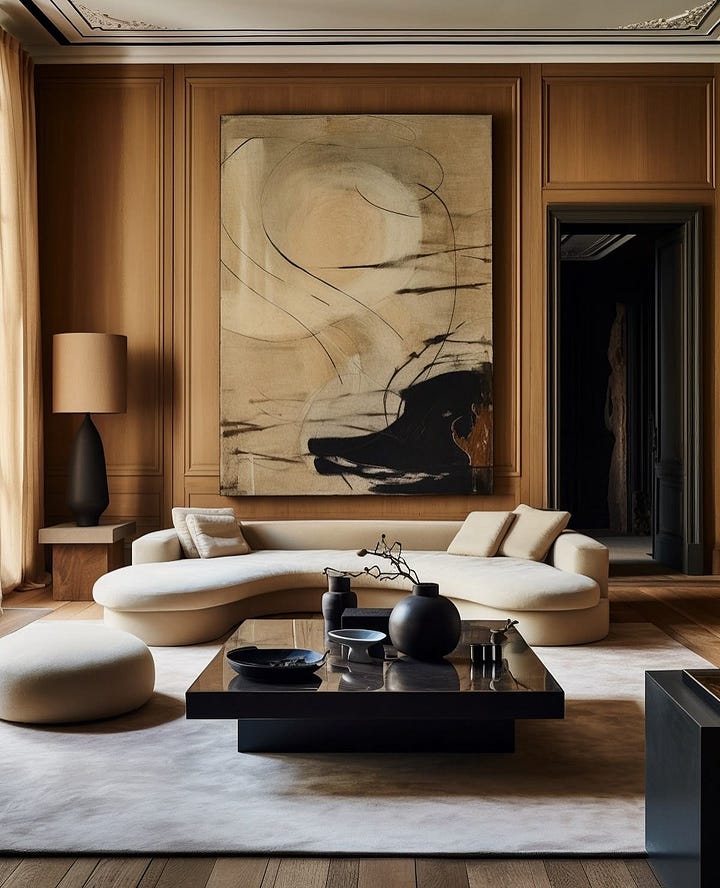

Images from Pinterest
3. Lighting & Atmosphere
Layered Lighting: Effective residential lighting combines ambient, task, and accent lighting to highlight focal points under various conditions. Custom fixtures such as sculptural pendant lights or hidden LED strips can be used to accentuate architectural features.
Dynamic Lighting: Dimmers or smart lighting systems shift the mood throughout the day, keeping the focal point effective in all settings.
📍 Example: Fallingwater by Frank Lloyd Wright – The stone fireplace anchors the living space, while floor-to-ceiling windows create a secondary focal point, leading the eye toward the waterfall outside.
In commercial design, focal points influence behavior, reinforce branding, and enhance navigation.
1. Structural and Spatial Planning
Grand Entrances and Atriums: In commercial design, the entrance or lobby often serves as the primary focal point. An expansive atrium or a dramatic double-height space creates a sense of arrival, reinforcing the brand’s prestige and setting the tone for the rest of the building.
Zoning Through Focal Points: Open-plan commercial environments, such as offices or retail spaces, can benefit from carefully placed focal points that delineate distinct zones. A central reception area, an eye-catching conference room, or even a unique staircase can provide natural wayfinding cues for occupants.
Architectural Interventions: Elements like cantilevered structures, asymmetrical facades, or exposed structural components (beams, trusses) are often used to create modern, innovative spaces. These interventions are designed not only for their aesthetic value but also to enhance the functionality of the space.

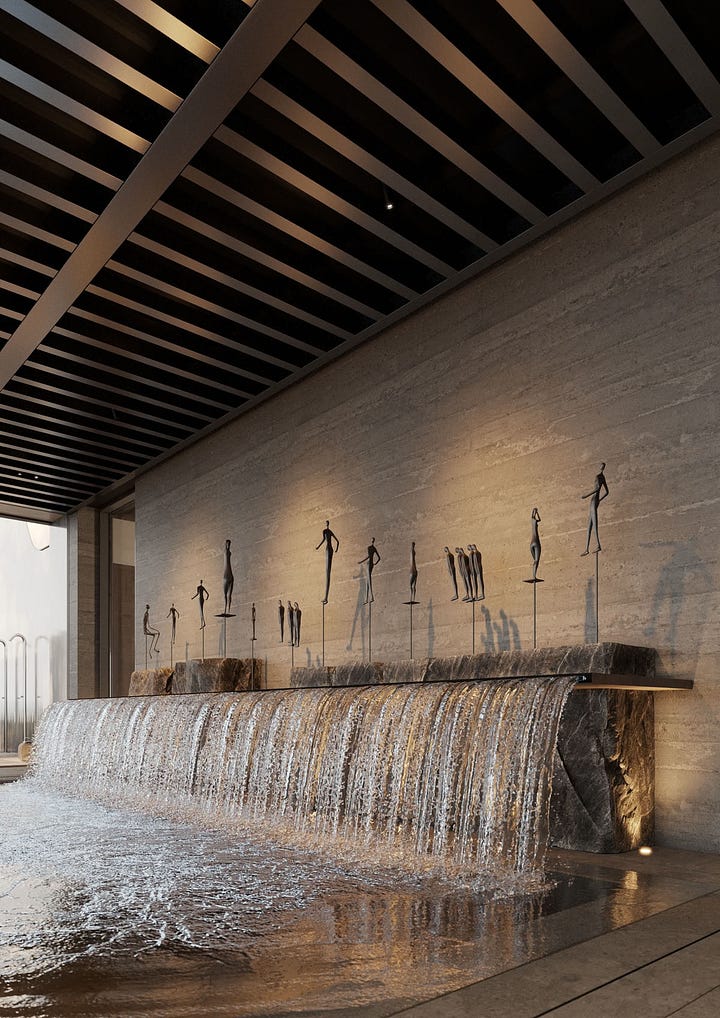
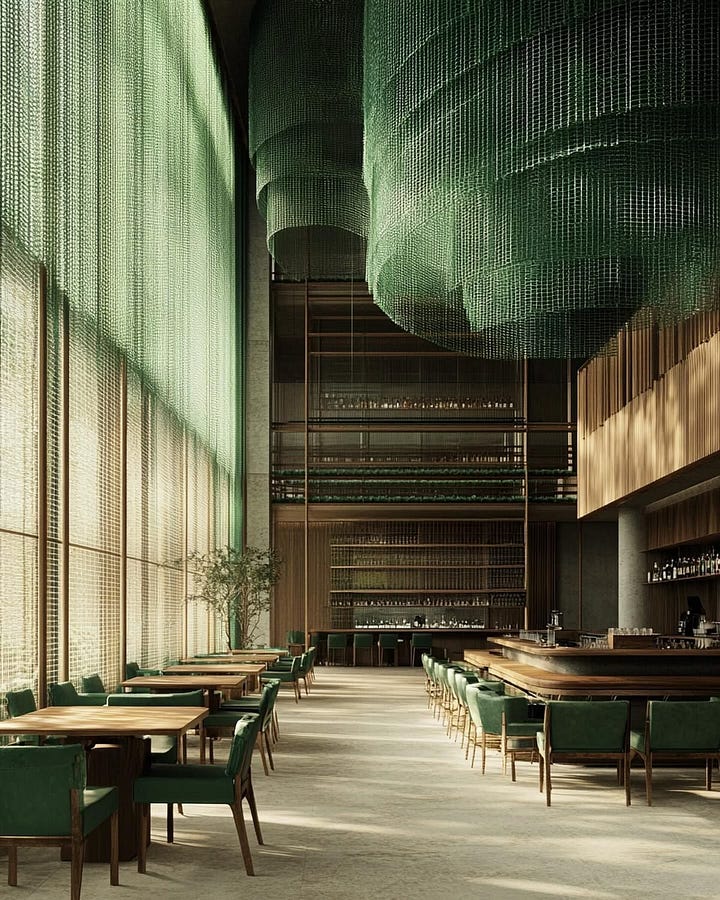

Images from Pinterest
2. Materiality & Brand Identity
Durable, High-Impact Materials: Polished metals, glass, and concrete balance functionality and visual appeal.
Brand-Centric Design: Focal points can integrate logos, color palettes, or unique installations that embody brand identity.
Sustainability: Eco-friendly materials and energy-efficient lighting reinforce innovation and responsibility.
📍 Example: Burj Khalifa Lobby, Dubai – A water-inspired sculpture greets visitors, with integrated light projections adding a futuristic brand presence.
Why Focal Points Matter…
A well-placed focal point isn’t just about aesthetics, it defines meaning, structure, and movement in a space.
In residential design, focal points reflect personality and comfort.
In commercial spaces, they shape customer experience, reinforce branding, and enhance engagement.
Understanding focal points is essential for mastering spatial storytelling. Whether designing a cozy living room or a high-end retail store, applying these principles ensures a space that captivates, functions seamlessly, and resonates emotionally.
Now, how will you redefine focal points in your next design?


